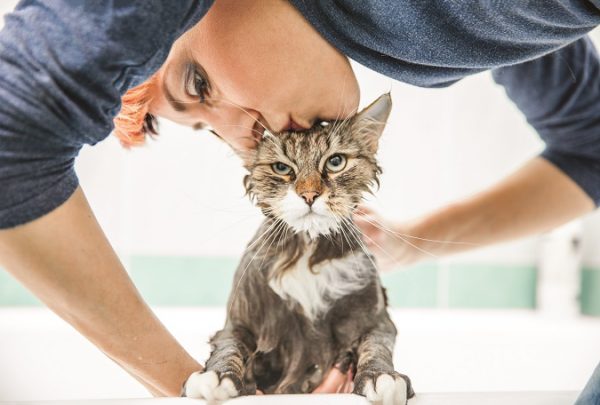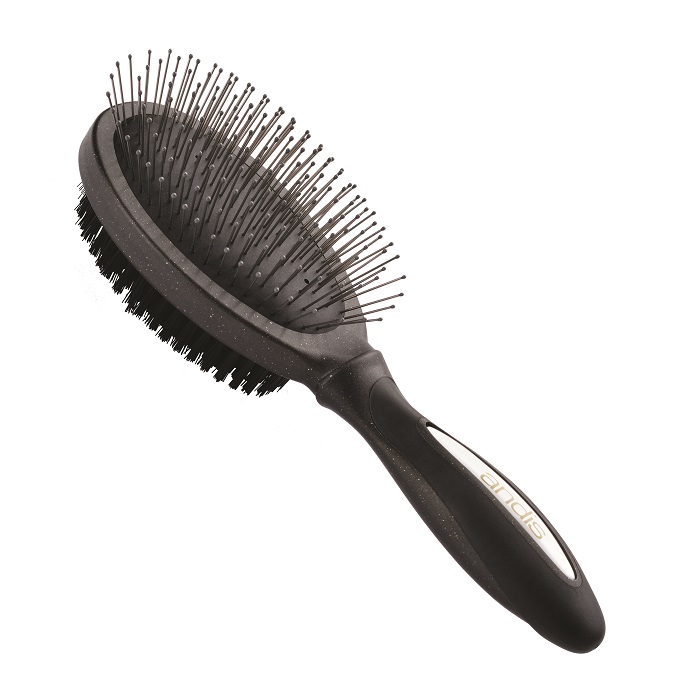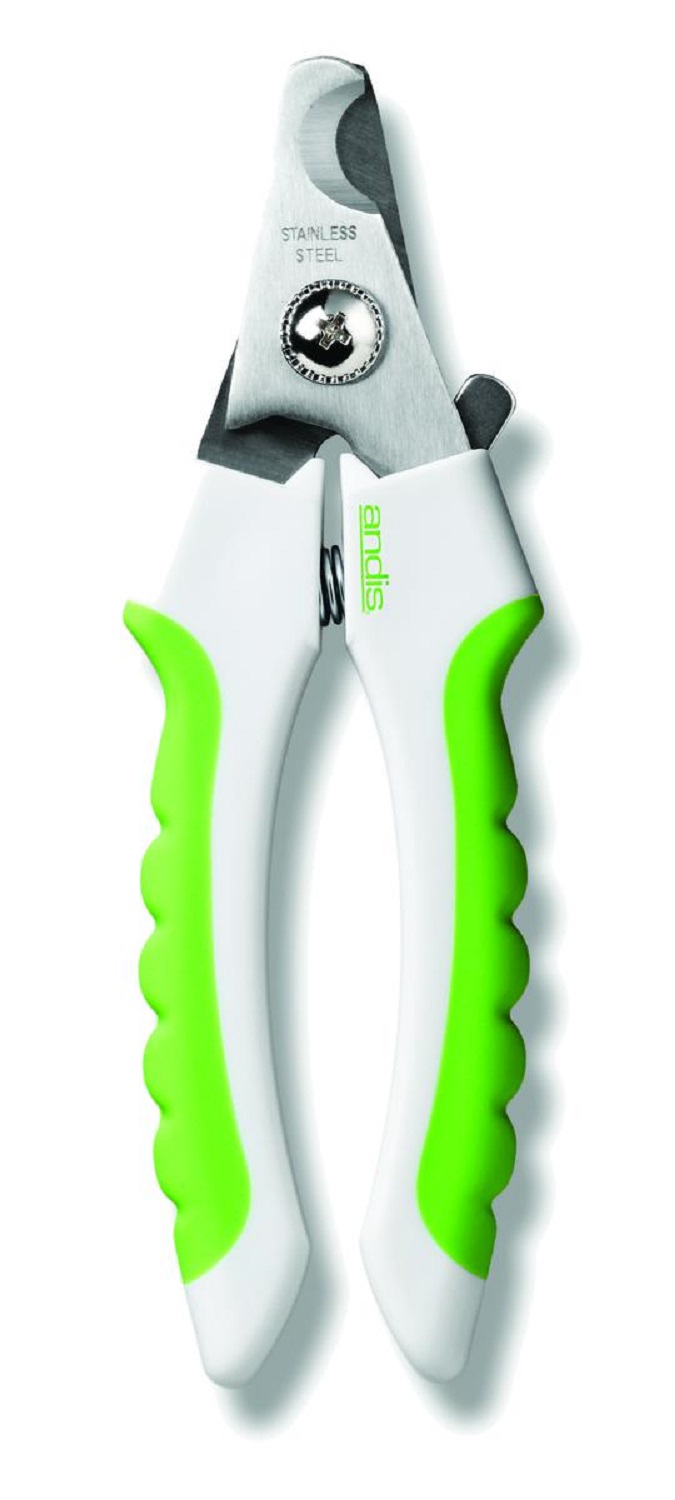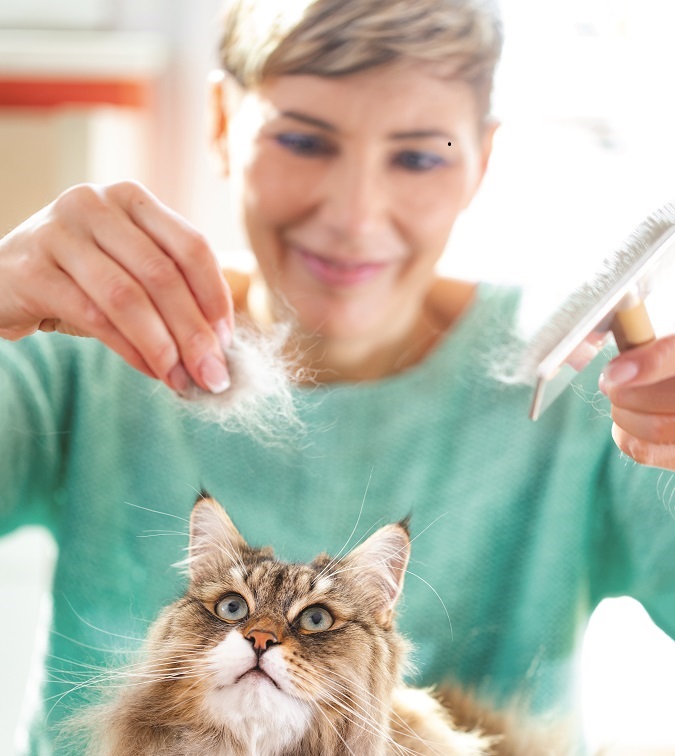Everyone knows that cats are wonderfully self-sufficient creatures. Left to their own devices in a safe environment, your favorite feline will happily snooze, snack and nap her way through the day, complete with partaking in self-care grooming sessions when needed. But that doesn’t mean our kitty pals don’t need a little extra human assistance in a few key grooming departments. Here’s how to get a grip on brushing, nail clipping, and eye and ear maintenance for your cat.
How to brush your cat
Unless you’re cohabiting with one of those futuristic looking hairless cats, every feline needs brushing to help remove dirt particles and dead hair. The ASPCA recommends doing this once or twice a week — although if you’re dealing with a long-haired kitty you’ll want to up that to every couple of days. “During these moments, the owner can brush out a tremendous amount of undercoat,” says Erica Ayala, a certified master cat groomer at Kitty Pride Cat Grooming in New York City, whose own resident felines are a couple of Persians named Samo and Sanjay. “That’s less hair the cat will ingest when they attempt to groom themselves.” (Ingested hair can cause icky hairballs.)
Regular grooming sessions can also become a bonding experience between you and your cat. Erica adds that they also allow you to spot “anomalies such as mats and other skin and coat issues before they become a big, dangerous and expensive problem.”
Focusing on brushing tactics, Erica says to “strategize beforehand.” This can mean:
✤ setting the mood by spraying feline pheromones in the air
✤ laying out all of your grooming brushes (Erica recommends a pin brush with bristles on the other side)
✤ making sure you approach your cat in a calm and relaxed manner.
“Most cats love their faces, necks, heads, back and sides brushed,” says Erica, “but it’s not uncommon for cats to get annoyed when you attempt to brush their underside.” She also points out that long-haired kitties need to have their armpits, thighs and tushy brushed to avoid mats. “Don’t brush all the easy parts and forget to brush the underside,” she advises.
If your cat does develop mats and you’re attempting to remove them yourself, it’s vital to be gentle and precise. “Cats can be very reactive and they have incredibly thin skin,” Erica says. “It’s very easy to injure a cat if you don’t know what you’re doing — I’ve seen many cats with V-shaped wounds because their owners attempted to cut mats out with scissors themselves.” During house calls, Erica has discovered frail, elderly cats who were so matted they had to undergo multiple visits to remove the mat. “Grooms like that are super heartbreaking but also incredibly rewarding when completed,” she says.
How to clean eyes and ears
“It’s OK to clean your cat’s eyes when they occasionally get dirty,” Erica says. “Brachycephalic cats — or flat- and smushfaced cats — are famous for getting dirty eyes because their heads are so oddly shaped.” When it comes to the ocular cleaning process, Erica recommends a “simple saline solution because it removes discoloring better than plain water alone.” She adds that if you have a Persian cat, cleaning dirty eyes every day “is a reality and not something to necessarily worry too much about.”

Adrienne Kawamura, the founder of City Kitty Franchise, points out that if you notice “any unusual amount of drainage” in or around your feline’s eyes, “it’s always a good idea to consult with your veterinarian, as eye herpes is a common issue in cats.”
Feline ears can be cleaned with diluted hydrogen peroxide, cotton pads or cotton balls. But err on the side of caution: As Adrienne points out, “Only clean the parts you can see, and if there is unusual debris or a foul odor, it’s time to see your veterinarian.” Erica agrees with a restrained approach to tackling the ears: “I think some well-meaning people over-clean. If debris is visible in the ear, it’s OK to wipe it off. But when in doubt, have a vet check it out.”
How to clip your cat’s nails
Scratching is vital behavior for a cat’s physical, emotional and mental well-being, so keep their nails well-conditioned. “Nails continue to grow on your cat, so clipping them will prevent the nails from growing into the pads of the feet, which can cause discomfort, pain and even possible infection,” says Adrienne Kawamura, who is the guardian of three Persians named Ferguson, Khalani and Lancelot. “Older cats can sometimes display bony changes in the feet due to arthritis, causing the nails to grow in a more circular fashion, so for elderly cats it’s important to keep them short.” Adrienne recommends clipping nails once a month for most cats and upping the routine to twice a month for kittens and seniors.
When you start clipping your cat’s nails, it’s crucial to always cut before reaching the quick (the pink part of the nail); just trim the sharp tip of the claw. Never trim near or below the quick. Also, cutting nails vertically ensures you don’t “mash the nail and splinter it,” Adrienne says. Dedicated cat (or even bird) clippers are advised, as they’re smaller than the dog clippers you might find at your local pet store. Or if your cat doesn’t mind it, try using a Dremel nail grinder.
Stay vigilant: If during the nail clipping process you spot any blood, use styptic powder applied to the tip of the nail. Adrienne also recommends “calm assertiveness” as your approach to grooming your cat: Reward with treats after a successful session, and always stop if your feline appears to be getting too aggressive.
Our Facebook friends share their grooming disasters
My cat, Osiris, was always lying on the wet floor in the shower, so I decided he might like a bath. I got into the shower with him and proceeded to bathe him. It sounded like a murder scene, and the aftermath was an actual murder attempt against me by my cat. I still love him dearly, but no more showers for him! — Luis Lopez
I was clipping my sweet Pebbles’ nails, and she yanked back just as I clipped, and I nicked her pad. My goodness, they bleed! I felt horrible, but I quickly dipped her paw in flour, then when the bleeding stopped, I put Neosporin on it. A day later, it was fine. She crossed the rainbow bridge about seven years ago, but I am still extra careful with my other cats. — Susan Kamppi
Our cat, Jet, who we acquired when he showed up at our house and never left, will only allow so much when it comes to grooming. I was trying to clip claws, when he had enough and attacked my arm. He grabbed my forearm with his front feet, bit me and started bunny kicking. All I could do was wait for him to stop. I still have scars from a yearand- a-half ago! — Martina Rusnov
To Bathe or Not to Bathe
Cats are notorious for hating water, but many people suggest they need regular bathing. What’s the real deal?
✤ The ASPCA recommends that most cats do not need to take baths under normal circumstances.
✤ If your feline appears to have gotten into shenanigans involving an odorous or sticky substance — yes, it’s bathtime.
✤ If you’ve adopted a hairless cat, you’ll need to bathe him once a week.
✤ If your cat winds up with fleas, yep, you’ll need to be taking a visit to the tub.

GROOM-TIME TOOLS
 |  |  |
When grooming your cat, a brush like this premium two-sided brush with pins on one side and bristles on the other will do the trick. $13.90; smallanimal.andis.com | If you choose to use clippers, use smaller ones created for cats, birds or small dogs. $11.97; smallanimal.andis.com | If your cat doesn’t mind a Dremel, try a cordless nail grinder. $54.99; smallanimal.andis.com |








